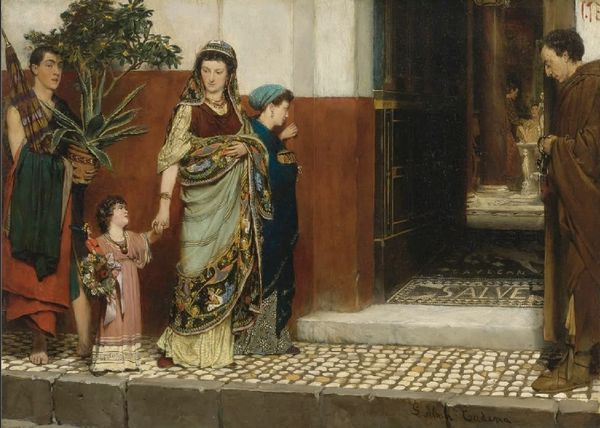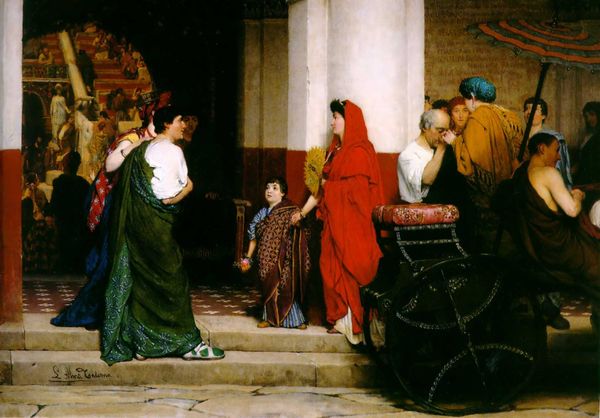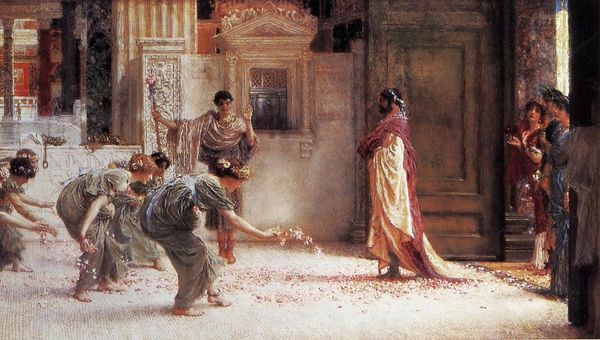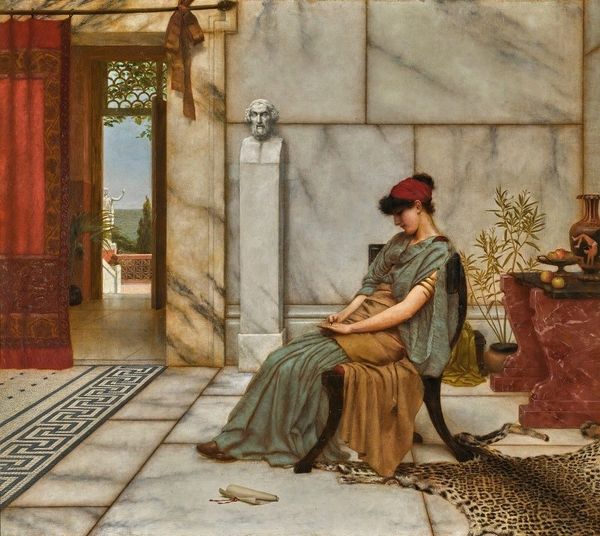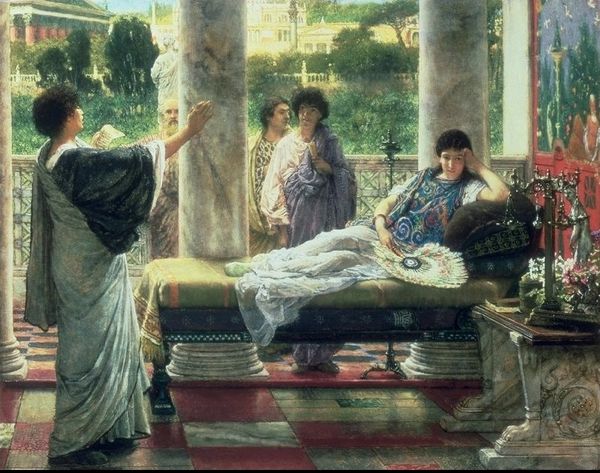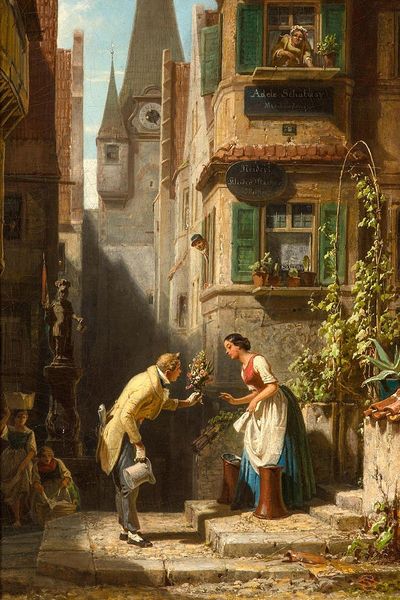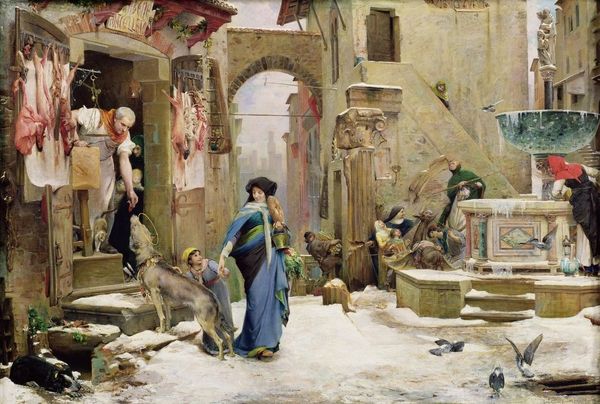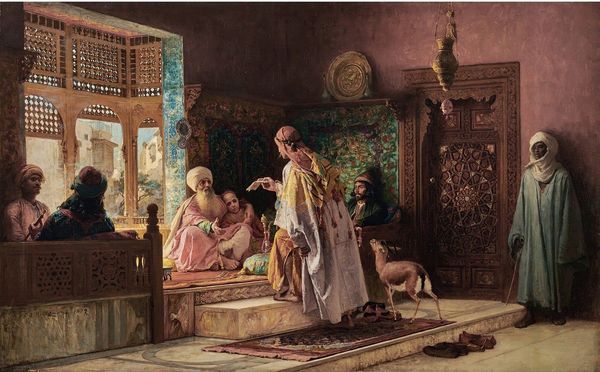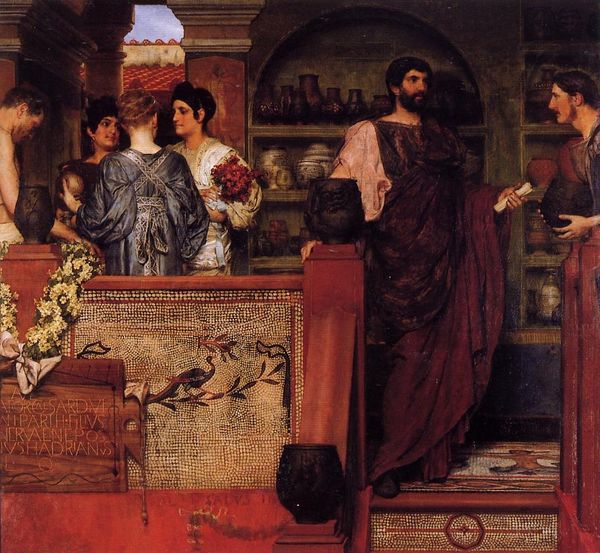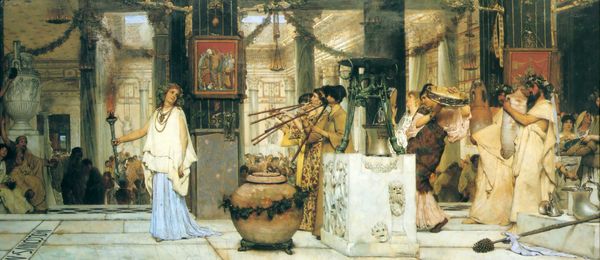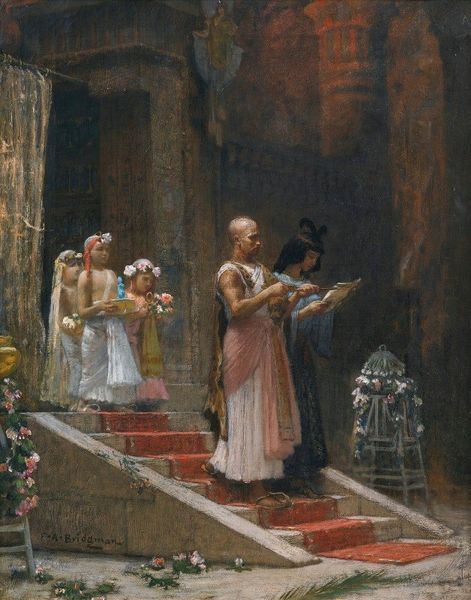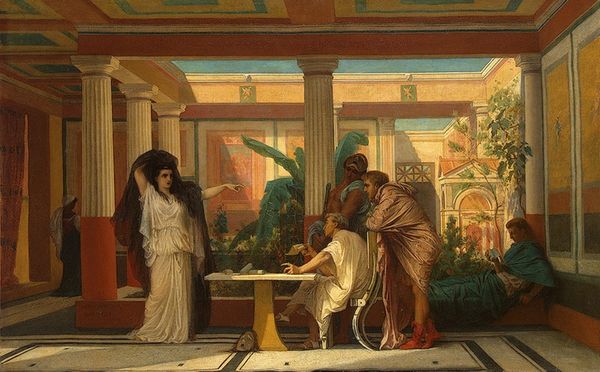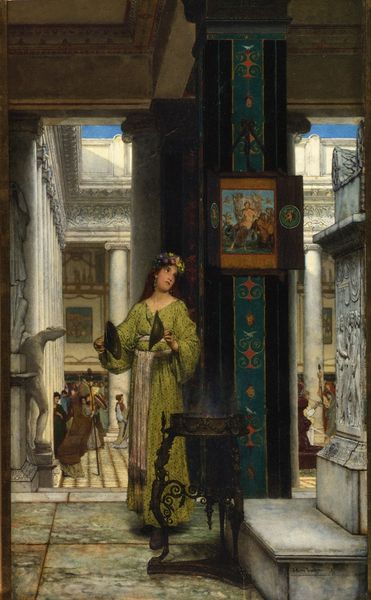
painting, oil-paint
#
portrait
#
painting
#
oil-paint
#
landscape
#
classical-realism
#
romanesque
#
orientalism
#
genre-painting
#
history-painting
#
academic-art
Copyright: Public domain
Editor: Here we have Lawrence Alma-Tadema’s "The Flower Market" from 1868, an oil painting depicting a bustling ancient Roman scene. I’m immediately drawn to how precisely everything is rendered. It almost feels photographic. What stands out to you in terms of its composition and the way it’s been painted? Curator: I would argue that its masterful use of light and shadow immediately compels analysis. Notice how the artist utilizes chiaroscuro to guide the viewer’s eye. Light falls deliberately upon certain figures, architectural details, and, naturally, the blooms, drawing us into the marketplace. Are we not drawn to compare and contrast this painting with Dutch Baroque examples? Editor: That’s a great point! It does have that kind of almost theatrical spotlighting effect. How do you think the classical architecture enhances or affects the piece overall? Curator: The architectural setting serves less as context than as compositional scaffolding. The vertical lines of the building juxtapose effectively with the soft curves of the figures and foliage, while the strong horizontals create a sense of depth and perspective. This lends stability and gravity. Editor: So, it’s the interplay between those lines and forms that are really critical to how we interpret the work? Curator: Precisely. The architectural forms contribute directly to the overall visual weight of the scene, enabling the depiction of the flower market. Editor: This close-reading approach really illuminates how seemingly straightforward elements like the light, architecture, and the depicted details are deliberately arranged for compositional effect! Curator: Indeed, and the appreciation of the artist's talent stems from close consideration of the various components present within the artistic object itself.
Comments
No comments
Be the first to comment and join the conversation on the ultimate creative platform.

